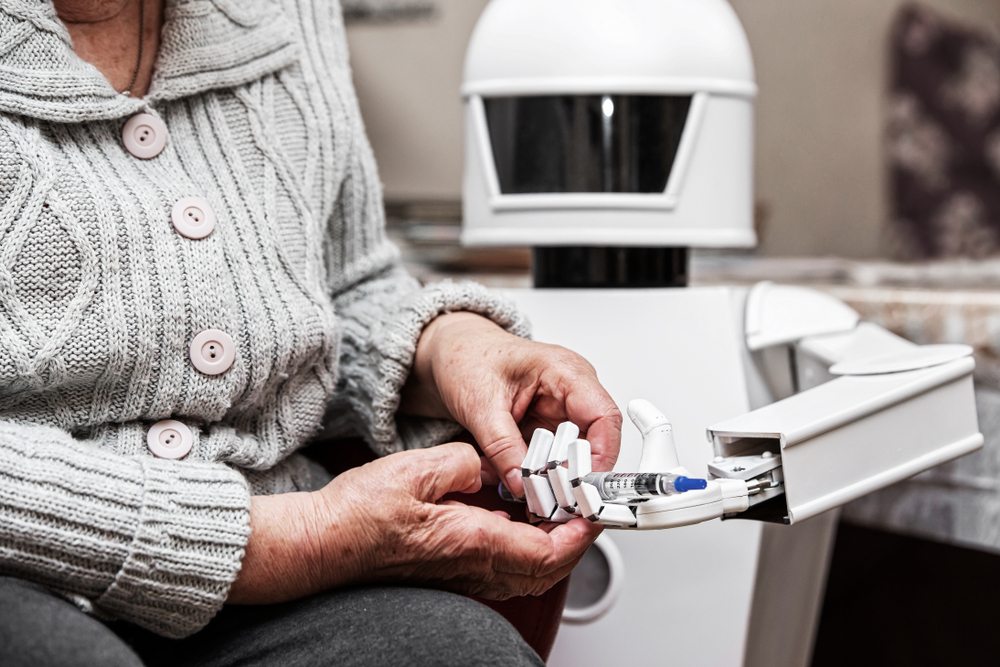Artificial intelligence (AI) and robotics are a hot topic in many industries and most nurses don’t know their nursing and healthcare implications or applications. Several years ago, with a focus on professional growth and development, I tasked my ambulatory care nursing team with starting a nursing journal club where they would use evidence-based literature to develop a presentation around a topic relevant to nursing practice. Because I’m a firm believer of leading by example, I decided to do a presentation titled, “Will Machines Replace Us,” which included discussion of the use of robotics, robots, and AI in healthcare. After my presentation, I was told that many minds were blown! What was unrealistic to many of the nurses I presented to was reality or already a work in progress across some parts of the United States and other parts of the world.
What is AI and how did it start?
Assembly lines in the early 1940s caused many human jobs to become obsolete as a result of automation. Automation in the automobile industry and food plants elicited fear, especially when the baby boomer population was able to combine automation with AI in 1955. Watson and colleagues describe AI (also known as augmented intelligence) as a combination of machine learning (a computer system that self-improves using collected data), deep learning (self-improvement through a network of neurons similar to the neurons in the brain), and human interaction (imitation of intelligent human behavior). History has shown how advances in “machines” have made the food and auto industries safer and more productive.
Over the years, healthcare, privacy, safety, and security have presented some of the most prominent concerns related to AI. However, many benefits are associated with its use. In fact, early uses of AI have been transformed into various innovative forms of technology. Their current uses in nursing and healthcare include the following:
- Virtual reality and simulations, which have become foundational in many nursing school and orientation programs
- Surgical robotics, which have decreased complications, healing times, and lengths of stay
- Actual robots, also known as virtual assistants, which provide companionship to elderly people in their homes or hospital settings. They also can complete simple tasks such as providing water and blankets to patients, taking specimens to the lab, retrieving medications from pharmacy, taking vital signs, and reminding patients with chronic diseases to take their medications and exercise.
- 3D printed body parts for transplants and to support human functionality, such as titanium nerve-powered legs and hands
- Enhanced clinical decision-making using pre-installed algorithms to analyze data, such as medication alerts and diagnostic support in electronic health records
- Voice recognition devices, which can support and potentially ease documentation fatigue
- Day-day-day patient care support in hospitals and wellness at home via virtual cardiac rehabilitation, remote monitoring to identify and address cardiac arrhythmias or prevent falls, and video visits with a clinician to address healthcare needs, especially in rural and remote area of the country
Clancy discusses additional benefits of AI, including population health management and support in the care of people with chronic diseases, improved workflows, reduced stress associated with routine and mundane tasks, and improving productivity and optimized costs and revenue.
Should We Be Afraid?
My short answer is: Do not be afraid! Do not be very afraid! My longer answer is that as a firm believer in innovation and as we are in the midst of a national nursing shortage crisis, I believe that now is the time for nurses to use their power to develop, pilot, and implement innovative technologies (machines) to support the provision of quality patient care. It’s time to leverage these new technologies! Ronquillo and colleagues outline the importance of nurse engagement in understanding these advanced technologies, being included in the decision-making processes from inception to implementation, and supporting the development of these technologies to advance global health. I believe that the development and use of these machines, has the ability to provide space, time, and opportunities for nurses to continue to use all of their experience, intuition, and critical thinking skills to provide safe, empathetic, and compassionate person-centered care—which machines can’t do, but nurses do so very well!
How Can You Get Involved?
Using your voice and power, consider the following options for getting involved:
- Volunteer to join any committee within your organization or healthcare system that’s testing new technologies. Remember to give feedback—you are the subject matter expert of your patients.
- Attend conferences related to innovation and advanced technologies.
- Practice, practice, practice! Take advantage of virtual training areas or “playgrounds” and simulation activities to learn new skills to support your nursing practice.
- Be innovative. Nurses have the power, knowledge, and skills to develop and safely implement new and advanced technologies that have been approved by the organization’s senior leadership.
- Build a network and encourage other nurses to better understand and get involved in the discussions related to new technology.
- Support and pilot technologies designed to include diverse patient populations and health equity models of care.
- Maximize and prioritize patient safety and health information security in the development and use of new technologies.
References
Clancy TR. Artificial intelligence and nursing: The future is now. J Nurs Adm. 2020;50(3):125-7. doi:10.1097/NNA.000000000000085
Ronquillo CE, Peltonen L-M, Pruinelli L, et al. Artificial intelligence in nursing: Priorities and opportunities from an international invitational think‐tank of the Nursing and Artificial Intelligence Leadership Collaborative. J Adv Nurs. 2021;77(9):3707-17. doi:10.1111/jan.14855
Watson D, Womack J, Papadakos S. Rise of the robots: Is artificial intelligence a friend or foe to nursing practice? Crit Care Nurs Q. 2020;43(3):303-11. doi:10.1097/CNQ.0000000000000315


















